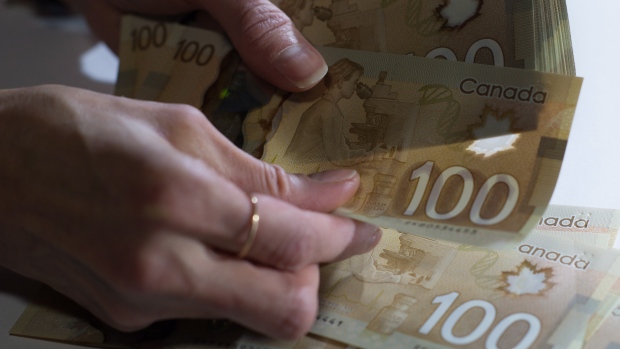Feb 21, 2020
Paying down debt versus contributing to an RRSP: Sometimes it’s a no-brainer
By Dale Jackson

The push is on to get Canadians to lower their 2019 tax bill by contributing to their registered retirement savings plans (RRSPs) before the March 2 deadline. We sure do love those refunds in the spring, but if you’re one of the growing number of Canadians mired in debt, those dollars are likely better spent paying it down.
According to Statistics Canada, the average Canadian household owes nearly $1.76 for every dollar it takes in compared with 90 cents in the 1990s. The average non-mortgage debt burden for individual consumers has topped $30,000 according to the Credit Counselling Society.
You wouldn’t know that from the glitzy media campaigns from the finance industry that tell you packing more money into your RRSP is the key to a secure financial future. Ignoring debt while promoting investments is a convenient omission for an industry that generates revenue from both ends.
In many cases, paying down debt is clearly the best choice, but you likely won’t get that advice from the bank or your advisor.
To determine the best way to deploy your cash, you need to weigh the potential annual return from an RRSP contribution and the risk associated with it against the annual rate of interest on your debt.
RRSP risk-return potential
RRSP contributions can be invested in just about anything, but since RRSPs are long-term savings vehicles, they need to be diversified into an assortment of safe investments for secure and consistent returns. Most advisors would agree a reasonable return expectation for a safe portfolio of investments in an RRSP is between four and eight per cent, depending on the investor’s tolerance for risk. Any advisor promising more is either misinformed or lying.
Your chances of higher returns are better if you re-invest your RRSP refund because it can grow tax-free, but those contributions and any returns they generate are full taxed when withdrawn. If you are in the lowest tax bracket when you contribute to your RRSP, the best you can hope for is to withdraw it in the same tax bracket. RRSP contributions result in bigger refunds if you are in a higher tax bracket.
Investing in your debt
Predicting the rate of return from paying down debt is more reliable and much easier. It’s whatever interest rate you are paying. Unlike equity investments, the return from paying down debt that would otherwise be compounding over time is guaranteed. Those gains are also tax-free, unlike an RRSP.
In many cases, choosing to pay down debt instead of making an RRSP contribution is a no-brainer. Credit cards charge close to 20 per cent on outstanding balances. Credit cards sponsored by the big retail chains can be as high as 30 per cent. Expecting a 20 or 30-per-cent risk-free or tax-free return on any other investment is simply unrealistic.
Even interest savings from paying down unsecured consumer debt or student loans at nine per cent provides superior returns without the risk or tax consequences.
In terms of risk, the only investment that compares with paying down debt is a guaranteed investment certificate (GIC), and right now, they return about two per cent.
Another factor to determine risk on debt is whether it is a “fixed” or “variable” term. Variable, or floating, rates are indirectly tied to a bank’s prime rate and ultimately the Bank of Canada’s benchmark rate. Variable rates have been at rock-bottom for a decade and have nowhere to go but up, and that adds an element of risk.
Sometimes it’s a toss-up
Believe it or not, there is bad debt and there is good debt. Credit card and consumer debt is generally bad because it’s “unsecured” and most often variable. That means there is no collateral, or assets, to back it up in the event of default. Lenders charge higher rates on unsecured debt because they take that risk.
The best examples of secured debt are mortgages and home equity lines of credit because real property is used as collateral. In the event of default, the lender can claim ownership to the borrower’s home.
Right now, variable-rate mortgages are comparable with fixed-rate mortgages at about 2.7 per cent for a five-year term. Locking in adds a layer of security.
If your debt is locked in at a low rate, investing inside an RRSP will probably bring a better return than paying that debt down.
If you have high-interest debt and own a home, talk to the bank about rolling it into a low-interest secured loan.
Payback Time is a weekly column by personal finance columnist Dale Jackson about how to prepare your finances for retirement. Have a question you want answered? Email dalejackson.paybacktime@gmail.com.









